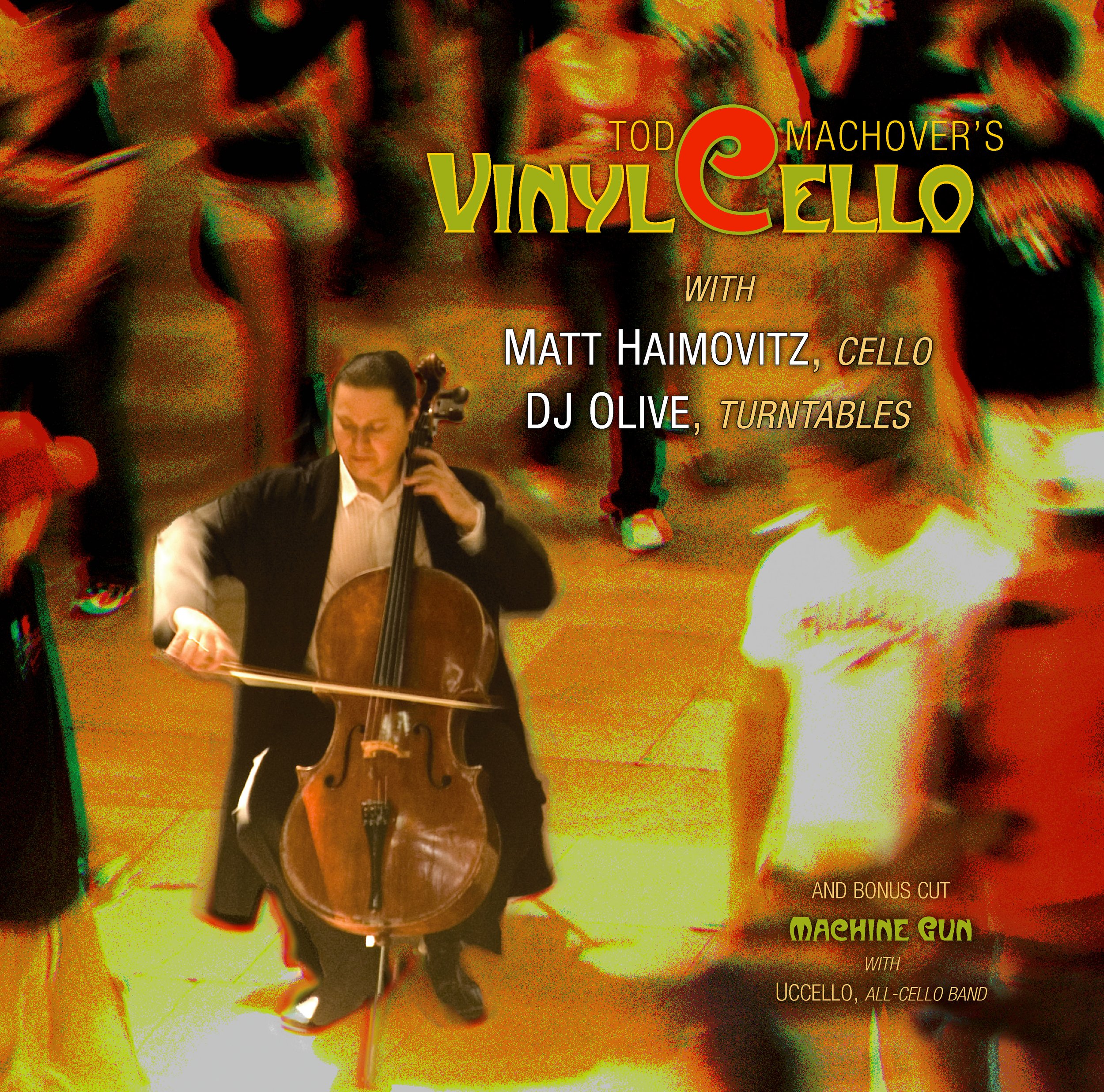Vinyl/Cello
VinylCello is an album of new cello concertos written for Matt Haimovitz and unexpected ensembles–big band, choir, DJ and live electronics–along with Haimovitz’s new arrangement of Jimi Hendrix’s Machine Gun for solo cello and all-cello band. On VinylCello, Haimovitz brings together the first three commissions from his ‘Buck the Concerto’ series,by composers Tod Machover, Luna Pearl Woolf, and David Sanford, with his own arrangement of Hendrix’s Machine Gun. In the hands of Haimovitz and Uccello, his all-cello band from McGill University, this war song, with its epic electric guitar solo, becomes a concerto for solo cello and an orchestra of seven cellos.Matt Haimovitz on ‘Buck the Concerto’ and Hendrix’s Machine Gun The ‘Buck the Concerto’ commissions strip the solo cello from its familial community and allow it to experience, interact, and survive in whole new musical landscapes, with the sense of alienation and liberation that this entails. Machine Gun, Jimi Hendrix’s protest song of 1970, resonates loudly today: ‘Machine gun/Tearing my body all apart/Evil man make me kill ya/Evil man make you kill me/–/Well I pick up my axe and fight like a bomber–’ Hendrix served his country in the Vietnam War and survived to trade his machine gun for an electric guitar, coming home to make music that penetrated our collective psyche. In my arrangement of Machine Gun, you hear a band of cellos coming together to honor a musician who had the courage and talent to risk having his voice heard above the cacophony of war.
-
MachineGun
Vinyl/Cello - I-IV
Vinyl/Cello - V
Vinyl/Cello - VI-IX
Après Moi, le Déluge
Scherzo Grosso
-
TOD MACHOVER ON VINYLCELLO
I am a cellist myself and have often written for the instrument, but took this challenge as a way to approach the instrument afresh. I started by developing a technique I’ve come to think of as ‘talking cello.’ The player uses the instrument to imitate the speaking voice with words remaining just beyond comprehension, resembling the fluid flexibility of rapid-fire conversation. These swift gliding phrases reminded me of turntable scratching, and led us to incorporate a DJ into the piece, to spin layers of texture mostly built from recordings of Matt’s playing, made with the help of MIT student and sound designer Nina Young. This material is organized into a ‘vinyl score’ (a term coined by DJ Olive) and performed on two interactive MIDI-based turntables (using software developed by PJ Steiner at the MIT Media Lab) that make textures and events available to be accessed, extended and manipulated in various ways. The result places the cello at the center, but just barely, as the accompanying sound world literally grows out of the solo instrument, enhancing, enriching, and occasionally enveloping it.
LUNA PEARL WOOLF ON APRÈS MOI, LE DÉLUGE
The people, music and landscape of New Orleans have stayed with me–joyful in the streets and music halls, dismaying in the disparity between the Garden District and rank poverty a scarce block away. Like the Eleanor Wilner poem it sets, the music of Après Moi, le Déluge travels a path among lament, protest, and homage. Its textures spring from the relationship between an ensemble of voices–acting as both orchestra and vehicle for poetry–and a solo cello, without words, which should have the space and time to speak its own language, but would also be responsible for supporting an unaccompanied choir. Initially, the cello and choir hand between them imagery and song, voiced and voiceless expressions of the agony of the aftermath and the horror of its implications. At the last stanza of poetry the ensemble becomes celebratory, in New Orleans funeral march style, with the cello wailing out a solo above the rest, and is finally overwhelmed by a lone soprano, in whose flight we hear the hope of someday coming home.
DAVID SANFORD ON SCHERZO GROSSO
While the influences in the piece are numerous, the main underlying thread is the memory of Ed Nelson (1962-2004), a trumpet player with the Pittsburgh Collective and a close friend of several members of the band. A simple reading of the concerto’s pairing might suggest that the cello represents the more ‘sacred’ while the big band the ‘profane.’ In actuality, each explores aspects of both idioms, and the ground in between. The band often veers closer to ‘European’ than ‘jazz,’ breaking down into chamber groups at certain points. At the same time, the cello often acts as a jazz or rock soloist (movements I and IV), or as part of the rhythm section–as Deidre Murray and Abdul Wadud have with Henry Threadgill’s groups, or Hank Roberts with Tim Berne, among others. Those familiar with Matt’s work won’t be surprised to hear him backed by drums, playing unison lines with the saxophone section, or playing in duet with electric guitar.
-
Release Date: October 1, 2007
Label: Oxingale Records (OX2011)
Artist(s): Matt Haimovitz, DJ Olive, University of Wisconsin - Madison Concert Choir (Beverly Taylor), Pittsburgh Collective (David Sanford)
Composer(s): Hendrix/Haimovitz, Tod Machover, Luna Pearl Woolf, David Sanford

